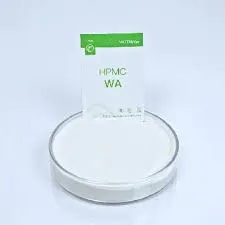
des . 01, 2024 17:20 Back to list
Solubility of HPMC in Various Organic Solvents and Its Implications for Applications
HPMC Solubility in Organic Solvents Understanding the Factors and Applications
Hydroxypropyl methylcellulose (HPMC) is a widely utilized cellulose ether in various industries, including pharmaceuticals, food, cosmetics, and construction. One of the critical properties of HPMC is its solubility in different solvents, particularly organic solvents. Understanding the solubility of HPMC in organic solvents is paramount for optimizing its applications and enhancing its performance in various formulations.
What is HPMC?
HPMC is a non-ionic polymer derived from cellulose, which has been modified through the introduction of hydroxypropyl and methyl groups. This modification enhances its thermal stability, mechanical strength, and solubility characteristics. The hydrophilic nature of the hydroxypropyl groups allows HPMC to dissolve readily in water, making it ideal for use in various aqueous systems. However, its behavior in organic solvents is equally significant, especially when formulating products that require organic solvents to dissolve other components or to maintain a specific consistency.
Solubility of HPMC in Organic Solvents
The solubility of HPMC in organic solvents is influenced by several factors, including the degree of substitution (DS) of the hydroxypropyl and methyl groups, the molecular weight of the polymer, and the nature of the organic solvent used. Generally, HPMC exhibits limited solubility in nonpolar organic solvents, such as hexane or toluene, due to the hydrophobic nature of these solvents. Conversely, HPMC can dissolve in polar aprotic solvents such as dimethyl sulfoxide (DMSO), dimethylformamide (DMF), and some alcohols.
The incorporation of polar groups in the organic solvent increases the potential for interactions with HPMC, facilitating dissolution. For instance, solvents like ethanol and isopropanol can enhance the solubility of HPMC to a certain extent, making them suitable for various formulation processes. Moreover, the solubility is often contingent upon the concentration of HPMC, where higher concentrations may lead to more pronounced viscosity and affect its processing behavior.
hpmc solubility in organic solvents

Factors Influencing Solubility
1. Degree of Substitution (DS) The DS of HPMC plays a pivotal role in its solubility. A higher DS often corresponds to increased hydrophilicity, enhancing its solubility in water and making it less compatible with non-polar solvents. Conversely, HPMC with lower DS values may retain a degree of solubility in more organic solvents.
2. Molecular Weight The molecular weight of HPMC significantly affects its solubility. Higher molecular weight HPMC forms more entangled networks in solution, which can lead to reduced solubility in some organic solvents. Formulators must carefully select the molecular weight that aligns with the solubility requirements of their specific application.
3. Solvent Characteristics The chemical structure and polarity of the organic solvent determine its ability to solvate HPMC. Polar solvents tend to solubilize HPMC better than those with low polarity. Additionally, solvent temperature can affect solubility, with higher temperatures typically increasing solubility rates.
Applications of HPMC in Organic Solutions
The unique solubility characteristics of HPMC in organic solvents allow it to be employed in various applications. In pharmaceuticals, HPMC is often used as a binder and film-forming agent in tablet formulations and coatings. Its ability to enhance the solubility of poorly water-soluble drugs in organic systems makes it a valuable component in drug delivery systems. In the construction industry, HPMC is utilized in cementitious materials as a thickener and water retention agent, improving workability and performance.
In summary, understanding the solubility of HPMC in organic solvents is crucial for maximizing its applications across different industries. By considering factors such as the degree of substitution, molecular weight, and solvent characteristics, formulators can tailor HPMC to meet specific performance criteria. As research and technology advance, HPMC's versatility in organic systems continues to offer exciting opportunities for innovation and improved formulations. The ongoing exploration of its solubility behavior will undoubtedly lead to enhanced applications, benefiting numerous sectors reliant on this essential polymer.
-
Unlocking the Benefits of HPMC Products: A Gateway to Versatile Applications
NewsAug.07,2025
-
Unleashing the Potential of HPMC Ashland: A Comprehensive Look
NewsAug.07,2025
-
Tile Bonding Cellulose: The Key to Superior Adhesion and Durability
NewsAug.07,2025
-
Hydroxypropyl Methylcellulose Powder: The Versatile Component in Modern Pharmaceuticals
NewsAug.07,2025
-
Hydroxyethyl Cellulose: The Versatile Solution for Various Industries
NewsAug.07,2025
-
Hydroxyethyl Cellulose (HEC): The Versatile Polymer for Various Applications
NewsAug.07,2025







